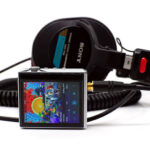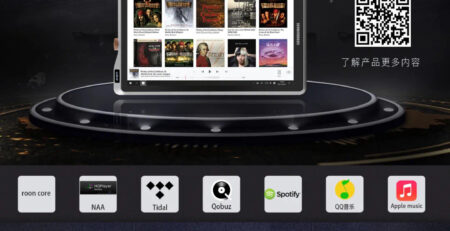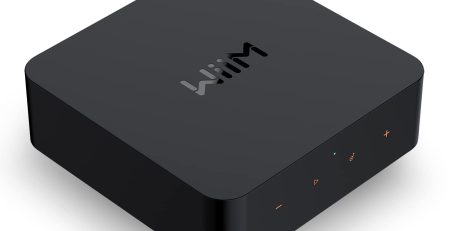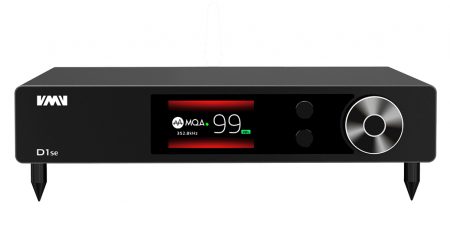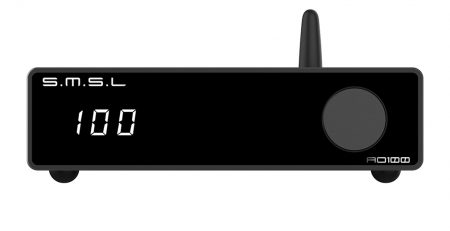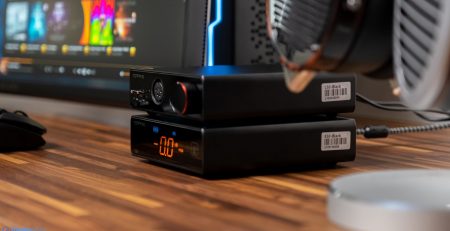With the Hidizs AP80 Pro-X, there’s nothing to complain about.
The Hidizs AP80 Pro-X is the latest generation of the company’s long-running micro DAP series featuring a new dual ESS9219C DAC. It is priced at $189.
Disclaimer: The Hidizs AP80 Pro-X sent to us is a sample in exchange for our honest opinion. We thank the team at Hidizs for giving us this opportunity.
To read more about Hidizs products we have reviewed on Headfonics click here.
Note, this 2-page review follows our latest scoring guidelines which you can read up on here.
They say, “If it isn’t broken, then don’t fix it.”. Hidizs is back with a refresh of their entry-level DAP, the Hidizs AP80 Pro-X. What can I say, at first glance, it looks exactly the same as its predecessor, the AP80 Pro.
Looking more deeply, it has the same small footprint, with minor details here and there. Under the hood reveals a more significant improvement, the DAC chips themselves!
Priced at $199, Hidizs may have unleashed another powerhouse packed in a small form factor.
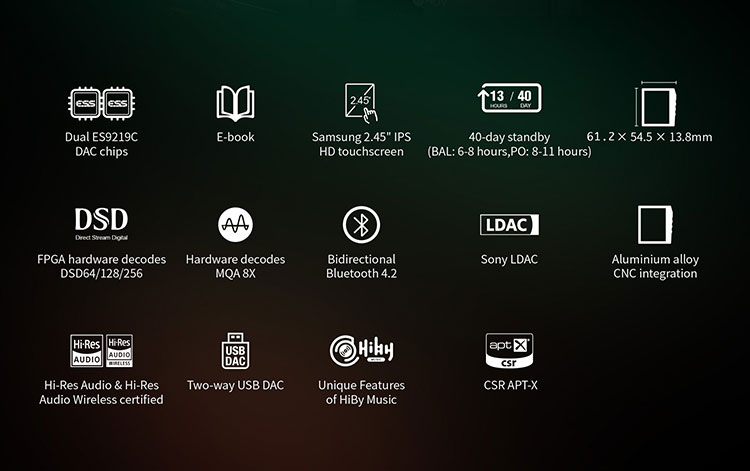
TECH HIGHLIGHTS
The Hidizs AP80 Pro-X uses a new dual ES9219C for its DAC. This chip is previously found in higher-priced DAPs such as the Shanling M3X and crept down to portable BT amplifiers such as the FiiO BTR5 and similarly priced DAPs such as the Hiby R3 Pro Saber. This is an upgrade from the previous model Hidizs AP80 PRO’s Dual ES9218P.
The main improvement of the new dual ES9219C DAC chip compared to the AP80 PRO’s dual ES9218P is its dynamic range and ultra-low distortion. The dual ES9219C DAC chip supports up to 2.0Vrms output with analog gain control which reduces noise and makes audio sound cleaner on audible levels.
This new high-performance DAC chip decodes up to 32BIT/384kHz and has improved the channel separation by 30%.
Hidizs retains the same built-in FPGA chip HBC3000, enabling native decoding support to DSD64/128/256. MQA decoding is still supported with up to 8x, compared to the old 4x unfolding.

DESIGN
With dimensions of 61.2 x 54.5 x 13.8mm, the AP80 Pro-X is a pocket-sized player housed in an aluminum alloy CNC integration. It comes in 3 colors, black, grey, and blue.
The grey model is a shade between lighter titanium and darker silver color. It’s neither flashy nor dull, just the perfect shade to make it look premium. The geometric aesthetics and carvings on the side are also better than the previous model, with a symmetrical indentation, which I would describe as a “flat KitKat”.
It has the perfect form factor. The player is easy to grip with one hand while allowing my thumb to access the entirety of the screen.
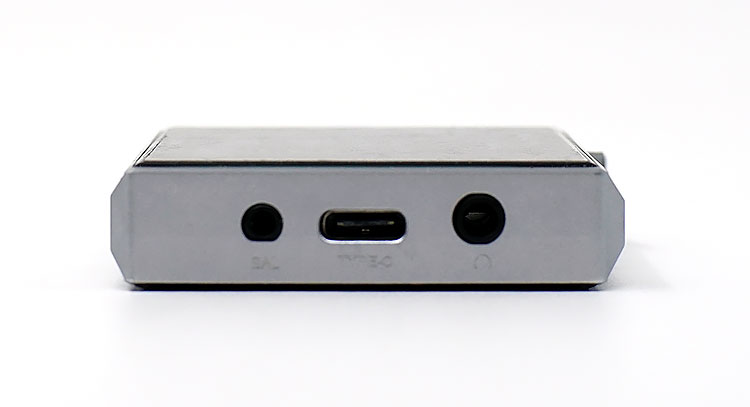
I/O
The ports of the AP80 Pro-X are pretty straightforward. Hidizs retains the balanced and unbalanced PO which are 2.5mm and 3.5mm respectively and can be found on the bottom panel of the player. A Type-C USB port can also be found on the same bottom panel, which doubles as a USB input and output.
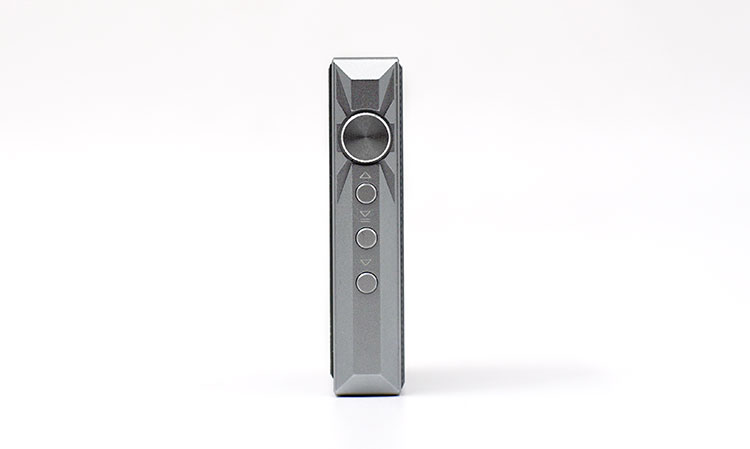
CONTROLS
Similar to the AP80 PRO, the AP80 Pro-X has retained the key tactile buttons. Amazingly, they were able to pack in this many features in such a small body.
It has an analog potentiometer to control music on the go. Aside from volume control, it also doubles as the player on and off button. Below it, traditional physical controls such as the playback buttons are comfortable spaced out, ideal for on-the-go listening to immediately pause, play, and skip tracks.
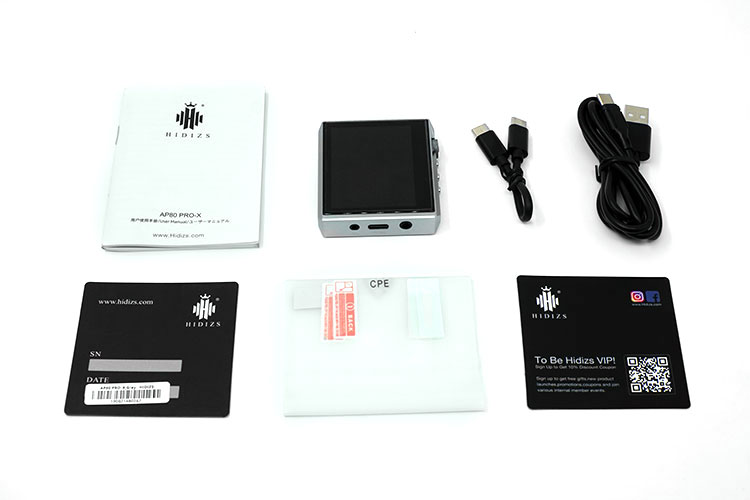
PACKAGING & ACCESSORIES
The Hidizs AP80 Pro-X, like the AP80 Pro, is a relatively basic unboxing experience. It comes in a black retail box, with foam protectors encapsulating the AP80 Pro-X. Below are the set of accessories included such as the extra set of screen protectors, warranty card, user manual, USB Type-C cable, and USB Type-C to a USB type-C OTG cable.
Pretty standard, however this time around, no silicone case that comes in with the unit, as it was with the AP80 Pro.
It would be best to get a protector for this DAP as it is small and can easily mix with small items such as keys that might scratch the beautiful glass back and metallic sides. Good thing Hidizs sells a leather case for the AP80 Pro-X which would be a good idea to bundle when getting this DAP.
SOFTWARE
HiBy’s proprietary OS is retained on the new AP80 Pro-X, and honestly, it is pretty intuitive if you ask me. The same processor does a decent job. There was no visible lag, and the gestures are snappy and fluid.
It makes sense to use the HiBy OS as it’s very easy to get used to. Even with new users of this interface, it behaves similarly to an android music player. Swipe left, go back. Swipe right, see the current music playing. There is no learning curve with this UI, it feels very natural and easy to use.
NAVIGATION
Hidizs has retained the responsive Samsung 2.45” IPS HD touchscreen. The display can go bright and wide enough when used outside under the sun.
No lags were experienced when navigating the UI. It was easy to navigate through the different apps and scroll through tracks in the music player, even with the small size of the player.
My only gripe with this player, because I’m pretty old school myself, is the lack of a “back” button which confines users to use swipe gestures to navigate the screen. However, the response is very good and the gestures are pretty intuitive especially in this day and age where smartphones no longer have tactile buttons.
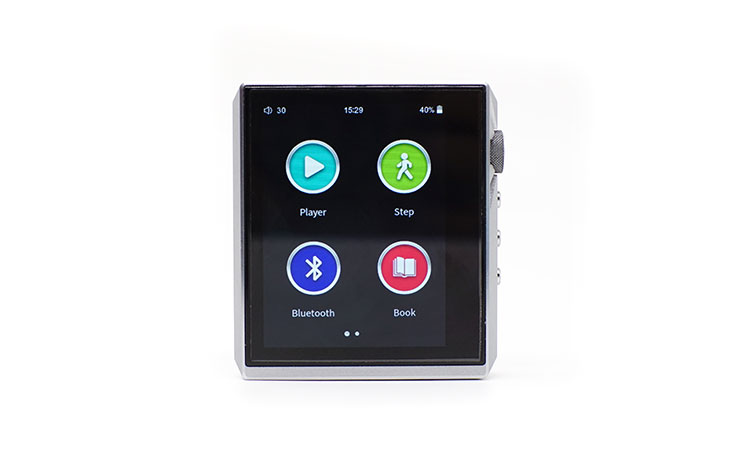
FEATURES
This player wants to do it all. Aside from the basic music player capabilities, it has included a powerful step counter and E-book function. Frankly, I get the point, this device is small, easy to carry around, which makes it perfect as a workout and travel companion so why not throw all these extra features?
STEP COUNTER
A pedometer sensor is included in the device. On the home screen, a step icon symbolizes the step function. It records your steps daily and saves them in a calendar format.
E-BOOK FUNCTION
Even with the tiny screen, Hidizs has retained the eBook app that reads .txt files. With this small real estate, it’s a feature I do not need but is nice to have. It can be handy to fight off boredom in dire situations.
MSEB
Good news for EQ and DSP tweakers. MSEB is here to stay with the AP80 Pro-X. The MSEB panel in the Music Player app lets users configure the temperature, bass extension, bass texture, note thickness, vocals and so much more.
Customization is an addicting feature and the MSEB feature makes this player oh much fun. It’s the ultimate tool that optimizes the listening experience through different tracks. Do certain tracks lack the bass boost? Just tweak the MSEB and it would conform to your preference.
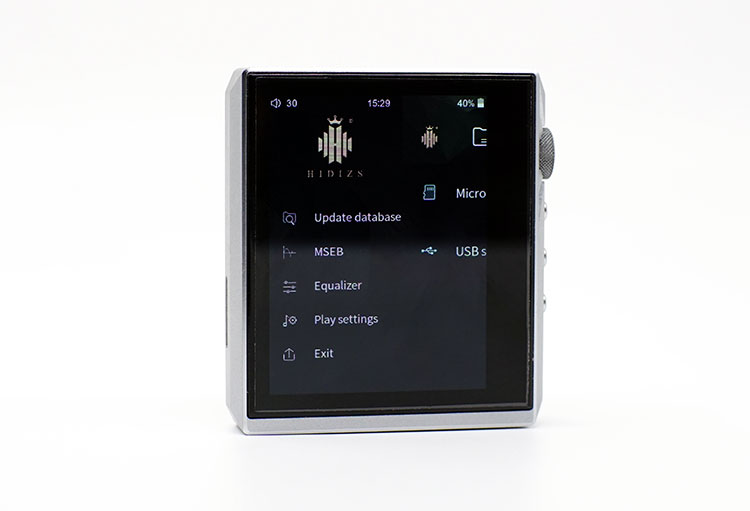
MEDIA MANAGEMENT
The media library on the AP80 Pro-X music player follows the same pattern as Hiby OS devices. For those new to this format, the player allows users to sort files by storage, albums, artists, genres, and format.
I prefer to navigate through my files through the storage option, wherein I have already sorted my playlists by putting them into separate folders on my SD card. This is pretty seamless as you can choose to shuffle and repeat through the folder.
However, to maximize the player’s capability, you can create your own playlist and favorites through the media player.
WIRELESS CONNECTIVITY
BLUETOOTH
This model has a bidirectional Bluetooth aka BT capability, meaning it can input and output signals via BT.
Pairing my Sony Wireless headphones is straightforward with this device. Just go to the Bluetooth icon on the home page and search for nearby devices. Your specified device will eventually pop up and pair instantaneously.
One letdown was the decision to use a BT 4.2 instead of BT 5.0. Bluetooth 5.0 would’ve enabled a longer range which would be nice when moving from place to place. Although, Bluetooth 4.2 range is good enough for the common listening use case.
This device also supports HiBy UAT, Sony LDAC, and aptX CSR to reduce latency and deliver CD-quality sound wirelessly over Bluetooth connections. These are really good considerations from Hidizs, as more and more audiophiles want the flexibility of listening to HiFi in both wireless and wired modes.
If you’re like me who often forgets to bring a dongle, then the AP80 Pro-X might just save you. The input capability allows me to stream using my phone and send the music to the AP80 Pro-X. I can then easily listen through my earphones connected to the music player.
WIRED CONNECTIVITY
USB-DAC
Using the AP80 Pro-X on my M1 MacBook Pro was pretty seamless. No drivers were needed to use the player as a DAC. Same as other DACs, just select the AP80 Pro-X in the sound options of the Mac’s Control Panel.
I have tried the AP80 Pro-X on my iPhone 12 Pro Max using a lightning OTG cable + USB-A to USC-C cable, which did not work due to the iPhone’s lack of power.
USB-OTG
The USB-OTG function is also pretty straightforward. I have tested it with my iFi nano iDSD Black Label and it worked flawlessly, just connect the USB-C OTG cable to the USB-A male port of the iFi Nano, and boom it works.

SOUND IMPRESSIONS
BASS
As with the previous variants, the AP80 Pro-X’s bass is pretty flat, with EQ deactivated. Both sub-bass and mid-bass are dry and lacking. Lively tracks are decorated with a slight thump in the bass region, which is a slight disappointment.
Turning on the MSEB is another story. I was pleasantly surprised how sound significantly changes with the MSEB feature. Turning up the Bass Extension and Bass Texture provides a deep rumble and more prominent mid-bass. It sounds solid and dense, as it should be.
MIDS
The midrange of the AP80 Pro-X is tuned more forward than both bass and treble. In fact, the midrange is the strength of the AP80 Pro-X as it sounds warm, rich, and natural.
Male and Female vocals are well-textured, with a slight warmth added on the lower mids. Harmonization of multiple vocals comes more alive thanks to the articulate details presented in the midrange.
Instruments also sound thick and full. It is easy to distinguish different strings and wind instruments. It perfectly captures the natural tonality which makes it sound very organic and true to life.
Turning on the MSEB though changes everything. When the bass is boosted, the midrange becomes recessed and further tweaking is needed to compensate.
TREBLE
Treble is comfortably tuned, with well-extended treble. The upper lift on the treble helps in making the sound feel airy and light, with a good shimmer on cymbals and higher frequencies.
There was no harshness, even in treble-heavy tracks. Treble does not feel rounded or flat. It is a bit relaxed and very forgiving. Tuning was just right and natural.
SOUNDSTAGE (INCLUDING IMAGING)
Soundstage and imaging are average with the AP80 Pro-X. Don’t get me wrong, it’s still one of the best in its current market price. Oftentimes, soundstage does not feel cramped. However, it is noticeable that space is limited, with maybe around 1 inch overhead.
Imaging is also just right. At times, it feels a sound comes from a single direction and is intimate. However, if you want great imaging, be prepared to save for a DAP twice or thrice the price of the AP80 Pro-X.
SYNERGY
The AP80 Pro-X has quite a flat tuning and it works well with anything, especially with its balance 2.5mm connection. The AP80 Pro-X is not a bass-heavy source, it is more a mid-centric DAP with a focus on the lower midrange.
Technically, AP80 Pro-X is still a budget DAP, not as dynamic as flagship, it does pair well with L-shaped or V-shaped monitors, adding a boost on the lower to upper midrange. It also does well with peaky, bright monitors as its treble tuning is more relaxed, more forgiving for piercing highs.
EFFICIENCY
A silent black background is found on the AP80 Pro-X. We have tested this with numerous monitors in the sub $500 range having above 100dB sensitivity and found no hissing or unwanted noise on both SE and Balanced ports.
There was also no audible channel imbalance at low volumes. The dual ES9219C DAC chip did deliver its promise of lower distortion and output noise.

POWER
The AP80 Pro-X powers the Sony MDR7506 63 ohms 106dB with room to spare. At just 40% volume on a high-gain plugged in the 3.5mm SE, sound can be heard at comfortable levels.
The technical sheet says AP80 Pro-X can power monitors as high as 200 ohms, which is quite impressive given its size.
PAIRINGS
V-shaped monitors such as the 7Hz Timeless and Moondrop KATO pair well with the AP80 Pro-X. With the Timeless 7Hz, a fuller midrange can be enjoyed with Timeless’ articulate mids. KATO’s midrange was also elevated, making the body fuller and smoother overall.
I’m not fond of pairing the AP80 Pro-X with mid-centric monitors such as the Kiwi Ear Orchestra. The bass further sank and feels so lifeless without it. Of course, you can always tweak the MSEB to optimize the tuning according to your taste, which I was glad that Hidizs offer this customization in this budget-friendly DAP.
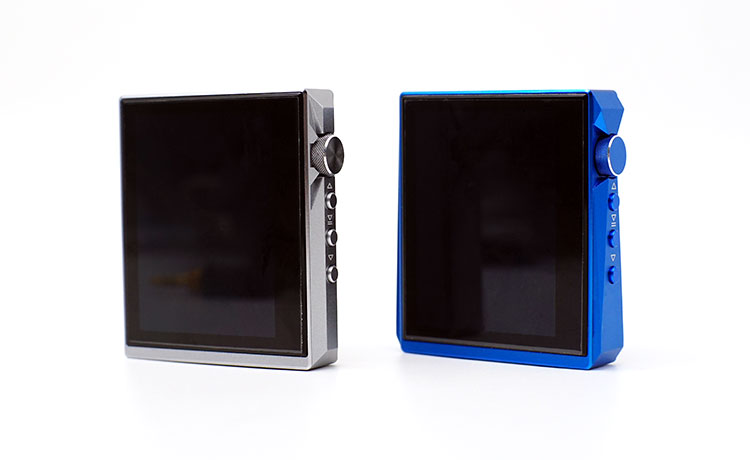
SELECT COMPARISONS
HIDIZS AP80 PRO
$168
TECHNICAL
The AP80 Pro is the third iteration of the predecessor to the Hidizs AP80 and AP80 Cu. Hidizs has refreshed each time with either a new chip or a new build, improving from the previous. With the AP80 Pro-X, it’s no different.
It finally ditched the ES9218P chip found in the AP80, AP80 Cu, and AP80 Pro(dual), and replaced it with the new ES9219C.
Balanced output remains the same at 190mW @ 32 ohms. Channel separation is improved for both SE and Balanced Output, from 70dB to 119dB from 98dB to 117dB, respectively.
For some reason, the AP80 Pro-X doesn’t have the FM feature which is perfectly fine, since I mainly listen through my SD card anyway.
Apart from these slight changes, the AP80 Pro and Pro-X are 99.9% the same. They have the same OS, battery, size, and power outputs.
PERFORMANCE
With the new chip under the hood, it would be interesting to know how much has changed between the two DAPs.
However, I find both DAPs to be tuned similarly, perhaps what we can now refer to as the AP80 house signature. The midrange is impressively warm and rich. Treble properly tuned, very forgiving even in peaky tracks, with a slightly dry lacking bass response.
However, after prolonged listening to these 2 DAPs, there do seem to be some subtle differences. The midrange on the AP80 Pro-X is cleaner and more articulate. Treble also has improved, with the Pro-X model having a more airy and fluffy texture. Higher frequency also extends a bit better, making it sound wider and clear.
Soundstage is similar on both DAPs. Not cramped but not expansive as well. Imaging though is better on the Pro-X. Layering has more noticeable gaps in the Pro-X model, resulting in a more accurate replication.
However, these differences are very subtle, not much different from one another. I would not recommend Pro users to upgrade to the Pro-X.
It would be better to save money and get a higher tiered DAP perhaps a Hiby RS6, Shanling M6 Pro, or even an older iBasso DX160. But if you’re coming from an older DAP and want something light and handy, then definitely skip the Pro and go for the Pro-X model.
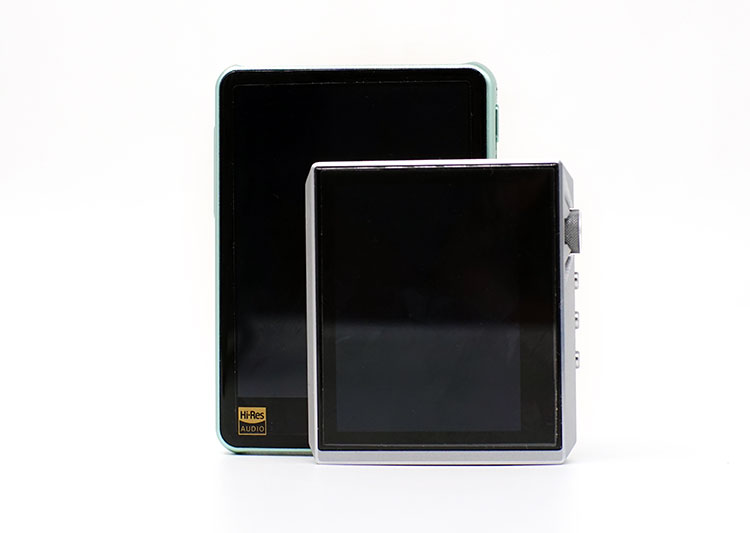
HIBY R3 PRO SABER
$209
TECHNICAL
There are a lot of similarities between these 2 DAPs, which is not surprising since they are competitors at a similar price point. For one, both have the same DAC chip and FPGA chip, a dual ES9218P and HBC3000 respectively.
Both use a HiBy OS with MQA support, with the AP80 Pro-X having a slight advantage of MQA rendering to 8x compared to the R3 Pro Saber’s 4x.
One significant difference between the two DAPs is the streaming capability of the R3 Pro Saber. The R3 Pro Saber has WiFi capability that connects streaming support to a built-in Tidal application. The R3 Pro Saber also has Bluetooth 5.0 that is more power-efficient and supports a longer range.
R3 Pro Saber also has a larger 1600mAh compared to the 800mAh polymer battery found in the AP80 Pro-X. Due to the larger battery, the R3 Pro Saber has a rated standby by the time of 50 days and playtime of 19 hours single-ended, 14 hours balanced while the AP80 Pro-X falls around half, with a rated stand by time of 40 days and playtime of 8-11 hours single-ended, 6-8 hours balanced.
Another consideration between the 2 DAPs is the amp output. Under 32-ohm loads, the balanced output of the R3 Pro Saber is more powerful with 280mW compared to AP80 Pro-X’s 190mW.
Both DAPs have no internal storage with a maximum storage of 512GB on AP80 Pro-X and 2GB on the R3 Pro Saber.
DESIGN
The first thing you’ll notice about these 2 DAPs is their size. The AP80 Pro-X is significantly smaller than the R3 Pro Saber, but frankly, the difference in size doesn’t make the other more travel-friendly than the other.
The finish on both DAPs is pretty good. They are both colored in a metallic matte color with a glass back panel. The AP80 Pro-X does seem to have put more thought into the shape as it features more futuristic geometric curvatures than the R3 Pro Saber has a uniform curved design.
What I like about the R3 Pro Saber is its bigger screen size. More information can be displayed with fewer gestures. For example, to navigate to your files with the AP80 Pro-X, you have to press the file icon then go to files. But with the R3 Pro Saber, these options are in the music player’s extra tab bar, which eliminates an additional step.
The tactile buttons of the two are similar, other than the AP80 Pro-X’s scroll wheel that doubles as a power button. The R3 Pro Saber doesn’t have a scroll wheel, instead, has a – and + button found on the left panel to adjust the volume.
PERFORMANCE
Both DAPs support a balanced 2.5mm, which is great to find in budget DAPs nowadays. With similar DACs inside, I was expecting a very similar tuning between both monitors. However, I did notice some key similarities and differences here and there, the more time spent with these 2.
The lows of the R3 Pro Saber do have a lot more punch than the AP80 Pro-X. The bass and mid-bass are more pronounced, have a thump that is otherwise dry and lacking with the AP80 Pro-X.
Both DAPs have a warm lower midrange, with the AP80 Pro-X having a slightly thicker and richer midrange tonality. Both male and female vocals sound a bit fuller with the AP80 Pro-X compared with the R3 Pro Saber. The R3 Pro Saber does have a more articulate midrange, wherein vocal and instrument’s textured tonality are easier to discern.
Compared to the R3 Pro Saber, the AP80 Pro-X has a more relaxed treble tuning. When using bright monitors with the R3 Pro Saber, it did sound peaky and unpleasant. It was a different experience with the AP80 Pro-X since it has a more relaxed treble tuning. It was more forgiving, more flexible in terms of gear pairings.
The soundstage and imaging of the R3 Pro Saber are significantly better than the AP80 Pro-X. Don’t get me wrong, the AP80 Pro-X is great in its own right, but the R3 Pro Saber just exceeds my expectation.

FIIO M6
$149
TECHNICAL
Inside the FiiO M6 is a Single ESS Sabre 9018Q2C chip, which has a 50% higher output (70mW @32 ohm) than its predecessor, the M7. Although compared to the AP80 Pro-X with a Dual ESS Sabre 9019C chip, the AP 80 Pro-X has a more powerful AMP with a 70mW SE at and 190mW with balanced.
The M6 also supports WiFi streaming, a feature that is not found in the AP80 Pro-X. It supports some of the famous music streaming apps such as Spotify and Tidal.
Both DAPs support dual-Bluetooth functionality, meaning it can serve as a BT Dac, as well as a BT music player. Both have Bluetooth 4.2 that supports LDAC, aptX, aptX HD.
When it comes to storage, FiiO M6 has a built-in storage of 2GB with external memory support of up to 2TB. The Ap80 Pro-X doesn’t have internal memory and only supports external memory of up to 512GB.
The M6 has a bigger battery with a 1600mAh with a rated standby time of 26 days, 13h playtime on a wired connection, and 15h over Bluetooth.
The AP80 Pro-X only has an 800mAh battery but can support a 40-day standby with play 6-8 playtime in balanced mode and 8-11 hrs playtime in SE, which is quite impressive given it has only half the battery capacity of the M6.
DESIGN
Side by side, they have the same width, with the M6 being taller among the two. A bigger screen is also seen in the M6, a 3.2-inch IPS HD touchscreen, vs the 2.45 inch IPS HD touchscreen on the AP80 Pro-X.
The tactile buttons have similar functionalities but have strikingly different layouts among the two. For one, the AP80 Pro-X has a Japanese ALPS volume knob that doubles as a power button, and basic playback functional buttons. The M6 on the other hand has a dedicated power button, a play/pause button, and a + – button for volume control.
The M6 also has more plain features, with a black metal body with rounded corners. The AP80 Pro-X has more refined details such as its elegant geometric cravings on a matte-painted metal chassis.
PERFORMANCE
The M6 has a ‘boomier’ lower-end compared with the AP80 Pro-X. Emphasized on midbass is more felt in the M6, especially with Hip hop and R&B tracks. It gives the extra thump that is quite dry with the AP80 Pro-X.
The midrange is more forward with the AP80 Pro-X. Although, the lower midrange appears to be equally thick and warm between the more DAPs. It’s in the upper midrange whereas in AP80 Pro-X felt a bit more energetic, giving female vocals a richer and warmer tonality. AP80 Pro-X also seems to be more articulate, with the M6 a bit lacking in resolution.
M6 is a bit treble shy, and it shows when comparing both DAPs. AP80 Pro-X has a more energetic treble, extending to the upper higher frequency. The M6 has a more relaxed tuning, with a conservative treble where higher frequencies take a step back and sound thin and rounded.
In terms of soundstage and imaging, both DAPs are pretty average, although the AP80 Pro-X is better. The soundstage of the AP80 Pro-X is not amazingly wide but it’s wider than the M6. FiiO has a more intimate presentation but not that far along compared with the AP80 Pro-X.
Vocal layering is more articulate and precise with the AP80 Pro-X. Multiple vocals are more distinguishable on the AP80 Pro-X, while it felt bundled in the M6.

OUR VERDICT
With Hidizs’s new refresh on its AP80 series with the AP80 Pro-X, there’s nothing to complain about. New DAC chip? Put in a new dual ES9219C. Futuristic chassis? Slap on more detailed geometric shapes.
They played it safe this time, stuck with what works and what is a sure hit. So now I wonder what if they put in a bigger screen, bigger battery, BT 5.0, and maybe a 4.4 balanced termination?
The AP80 Pro-X is a budget powerhouse, priced at a friendly budget , and should make a lot of people happy with its nearly invisible pocketable size that functions as a DAP, USB DAC, BT DAC, and even as a phone dongle.
HIDIZS AP80 PRO-X SPECIFICATIONS
- Supported MicroSD card: up to 512GB
- OS: HiBy OS3.0
OUTPUT PARAMETERS(SINGLE-ENDED)
- Output Power: 70mW+70mW@ 32Ω
- Frequency response(±3dB): 20-90kHz
- THD+N: 0.0015%
- Dynamic Range: 115dB
- SNR: 119dB
- Channel Separation: 110dB
Output Parameters(Balanced Connection)
- Output Power: 190mW+190mW@ 32Ω
- Frequency response(±3dB): 20-90kHz
- THD+N: 0.0015%
- Dynamic Range: 116dB
- SNR: 120dB
- Channel Separation: 117dB


